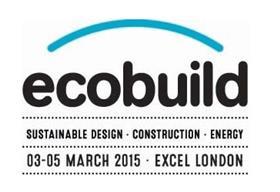We can’t predict the future, but we can detect certain trends. Here are four that will fundamentally change the way we live

The world is changing fast in a multitude of different dimensions. If one stops to think about it too long, it can be disconcerting. One thing is for sure: whatever we think the future holds, the reality is likely to be very different. Perhaps the accuracy of our predictions matters less than the intent. Because without a vision of the future, how can we take decisions today or tomorrow that will enable us to build a better world?
So let us assume our vision is “a built environment that enables a high quality of life for people within limits our planet can support”. First articulated by the UK Green Building Council, this vision is now shared by many organisations responsible for shaping the built environment.
But do we all fully appreciate what this means? Through a process of visualisation, based on changes we believe we will face imminently, perhaps we can get closer to what such a vision might look like in practice. In the last few months, JLL has initiated a major piece of thought leadership into the megatrends that are likely to affect the real estate sector - here is an early preview.
Megatrend 1: Clean-tech revolution
Our starting point here is the commitment we have made to reduce greenhouse gas emissions by 80% by 2050 in the UK and across Europe. To achieve this, all new buildings will need to be net positive on energy and carbon to compensate for residual emissions associated with the 60% or so of our 2015 stock that will still be around. Individual buildings will be powered by decentralised community-owned systems that generate renewable electricity, heat and cooling, with high capacity storage and low transmission losses. Flat urban surfaces - whether vertical, horizontal, or diagonal - will be covered in photovoltaic film barely detectable by the human eye, as a result of our advances in nanotechnology. Cities will be dotted with wind and solar power hubs and, of course, we will have transformed the efficiency of existing homes such that the term “fuel poverty” is no longer understood.
Megatrend 2: Urbanisation and the rise of land and resource scarcity
By 2050, somewhere in the range of 66-75% of people will be living in cities. This will lead to the emergence of new satellite, largely residential towns constellated around major conurbations to house workers. These will have been developed due to poor housing supply and chronic overpricing within city centres, but also due to massive public and private investment in infrastructure, resulting in fast, low-carbon mass-transit systems.
Volatility in commodity pricing and severe shortages of certain resources (such as water and rare metals) will have dramatically changed the way in which the construction industry operates. Prefabrication, on-site assembly, natural methods of construction, and biomimic design will all feed into a more circular economy, as construction and demolition waste is eliminated and materials-exchange schemes become the norm.
Megatrend 3: Ageing demographics and the growing importance of ‘wellness’
With the proportion of elderly expected to rise by 50% by 2030, the typical real estate portfolio will have adapted significantly - both in terms of asset allocation and physical design features. Healthcare and small-scale retail facilities will be integrated within residential schemes, and sophisticated mechanisms to allocate carers to patients will maintain a high quality of life for elderly people within buildings they call “homes”.
The quest for wellness will have continued apace, as individuals increasingly recognise the link between their wellbeing and surroundings. Boundaries between inside and outside will become increasingly blurred, as design emphasis focuses on reconnecting people to the natural world. This will take place through biomimic design, green spaces and parks, integrated design such as green walls, vertical farms, roof gardens, and even digitally enhanced video screens showing uplifting scene-scapes or views.
Megatrend 4: Technology and smart cities
The performance gap between a building’s anticipated performance and how it actually operates will have all but disappeared. Buildings will be digitally optimised so that resource efficiency, materials recycling and energy profiling can be delivered through the Internet of Things, which itself will offer growing networks of low-cost sensors and actuators for data collection and monitoring in buildings, supporting smarter decision-making and asset management.
The growing population of urbanites buying their varied goods online will have led to a drastic rethink of retailers’ logistics networks. Look out for “urban logistics” units - or small thin parcel hubs with extensive loading facilities embedded in cities, enabling rapid response and delivery times.
Julie Hirigoyen is UK head of sustainability JLL and incoming chief executive UK Green Building Council. She will be speaking in the Ecobuild session “Visions of the future: Five big ideas”, Thursday 5 March, 15.00 - 16.00
View the full Ecobuild programme here >>
Register for free here >>




























No comments yet